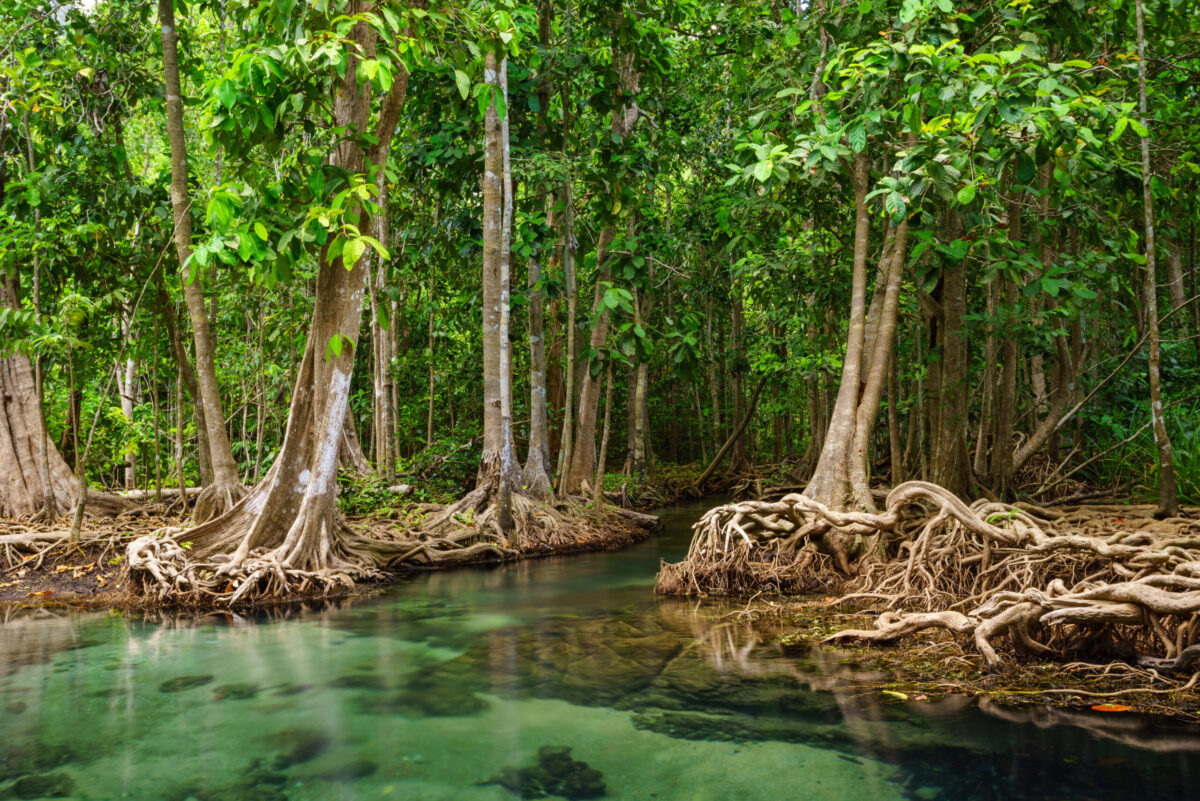When people think of tropical coastal beauty, they often picture pristine beaches, vibrant coral reefs, or lush rainforests. Yet, there is another ecosystem equally critical to the planet’s health and biodiversity: mangroves. These unique trees and shrubs form dense forests along coastlines, acting as guardians of the sea and land. Let’s explore why mangroves are indispensable to ecosystems in Cozumel and what we can do to protect them.
What Are Mangroves?
Mangrove ecosystems are unique coastal wetlands found in tropical and subtropical regions. A recent study by the IUCN reported that nearly half of all mangrove forests are at risk of collapse by 2050. This is alarming news as mangrove forests play a crucial role in maintaining marine biodiversity and providing essential services for humans. Characterized as salt-tolerant trees, these intricate systems serve as nurseries for many marine species, protect coastlines from erosion, and sequester significant amounts of carbon—even at a faster rate than tropical forests!
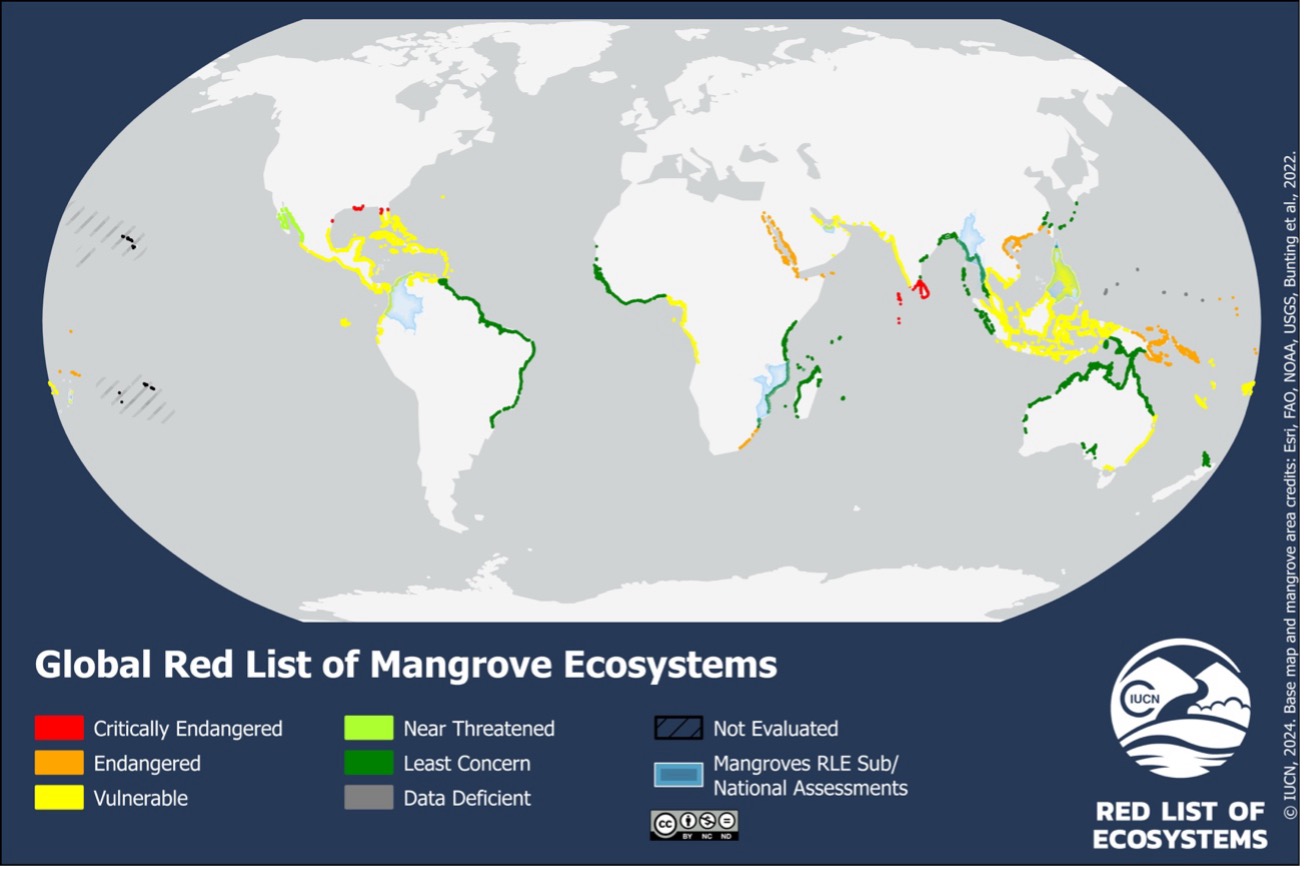
Types of Mangroves in Cozumel
Fortunately, Cozumel has protected many areas of this valuable ecosystem. There are four types of mangrove species on the island:
- Avicennia germinans (Black mangrove): Notable for its aerial roots, called pneumatophores, which allow it to breathe in waterlogged soils. Found in areas with high salinity and often form dense forests.
- Laguncularia racemosa (White mangrove): Its leaves are green with salt glands on the edges to expel excess salt. Grows in areas with lower salinity than black mangroves and often forms mixed forests with other species.
- Rhizophora mangle (Red mangrove): Has prop roots that provide stability in soft soils. Produces propagules, which are seeds that germinate while still attached to the parent plant. Found in coastal areas exposed to tides.
- Conocarpus erectus (Buttonwood mangrove): Its leaves are small and oval-shaped and pointed. Produces small, round fruits resembling buttons, hence the common name. A pioneer species, often colonizing disturbed areas or coastal dunes.
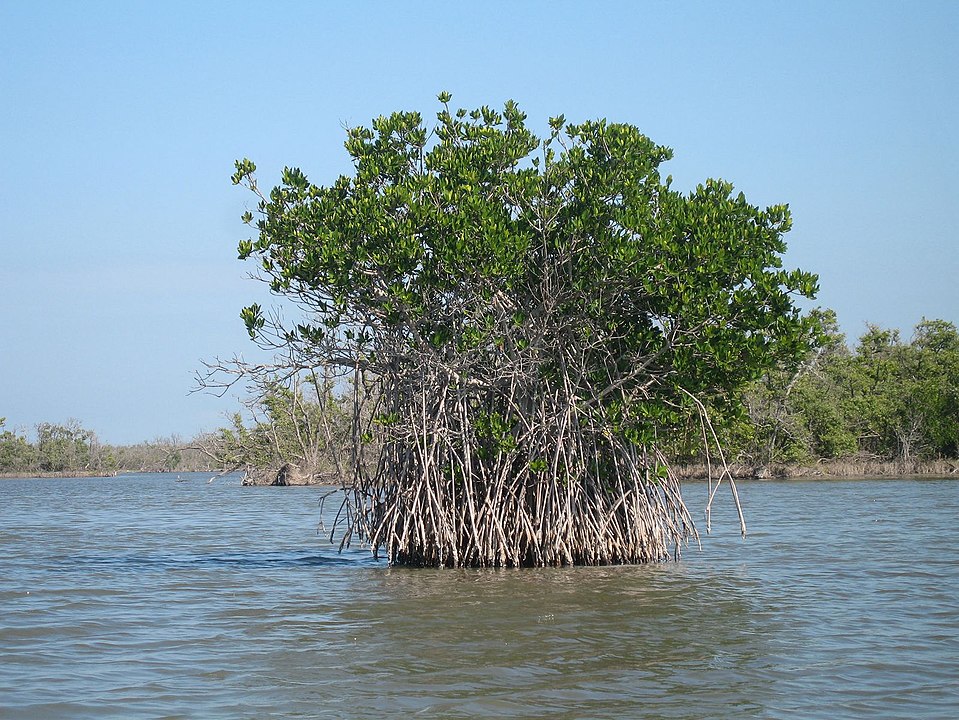
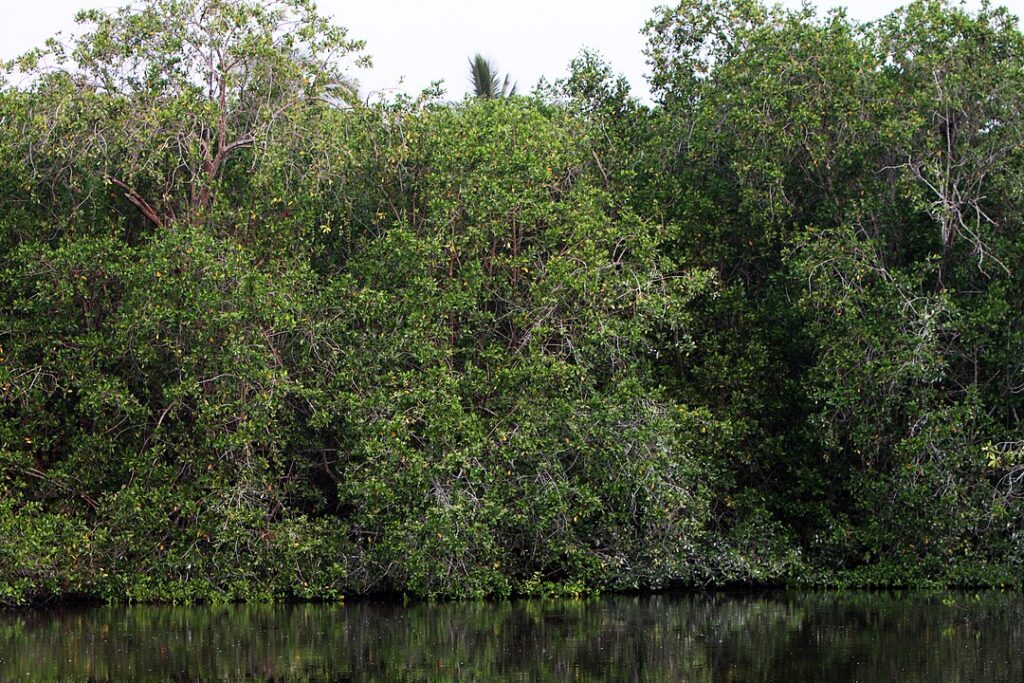
The Role of Mangroves in Cozumel’s Ecosystems
- Biodiversity Hotspots Mangroves are home to a wide variety of species, from fish and crabs to birds and insects. Juvenile fish and crustaceans find refuge among their roots, making mangroves essential for healthy fisheries.
- Carbon Sequestration Powerhouses Often referred to as “blue carbon” ecosystems, mangroves are incredibly efficient at capturing and storing carbon dioxide. Per hectare, they can sequester up to four times more carbon than rainforests, making them a critical ally in combating climate change.
- Natural Coastal Defenses Mangroves act as natural barriers against storms, hurricanes, and tsunamis. Their roots reduce the impact of waves, protecting coastal communities from erosion and flooding.
- Water Quality Improvement Mangroves filter pollutants and sediments from the water, improving water quality for both marine life and human populations.
Mangrove Restoration in Cozumel
The mangrove restoration program we are assisting with is a collaborative effort led Cozumel Reef Restoration Program and Sand Dollar Sports Dive Center. This program aims to spread awareness of the mangrove ecosystem and the connectivity they have with coral reefs, highlighting the importance of healthy mangroves for coastal ecosystems in Cozumel and their economic value to the community.
This project was born from the necessity of educating younger generations and adults about the huge relevance mangrove forests and wetlands have for the general health of coral reefs. The educational nursery was made from donations to the Cozumel Coral Reef Restoration Program (CCRRP). These donations were used to buy soil, biodegradable bags, and gardening tools. The rest of the materials were recycled objects or provided by nature.
Steps We Take:
- Creating the Soil: The soil is made from three main components: sand from the site, black ground soil from a local greenhouse, and sargassum from the shore. We mix equal parts of sargassum, soil, and sand, which has proven excellent for mangrove growth.
- Preparing Biodegradable Bags: The biodegradable bags are filled with the soil mixture. Seeds from red and button mangroves, the naturally occurring species in our nursery, are then collected.
- Planting Seeds: Depending on the type of mangrove, 1 to 3 seeds are planted in each sack and watered with a mixture of half fresh and half saltwater.
- Monitoring Growth: The growth of each mangrove is monitored, focusing on the color and shape of the leaves, and measuring the development of each plant to estimate growth rates.

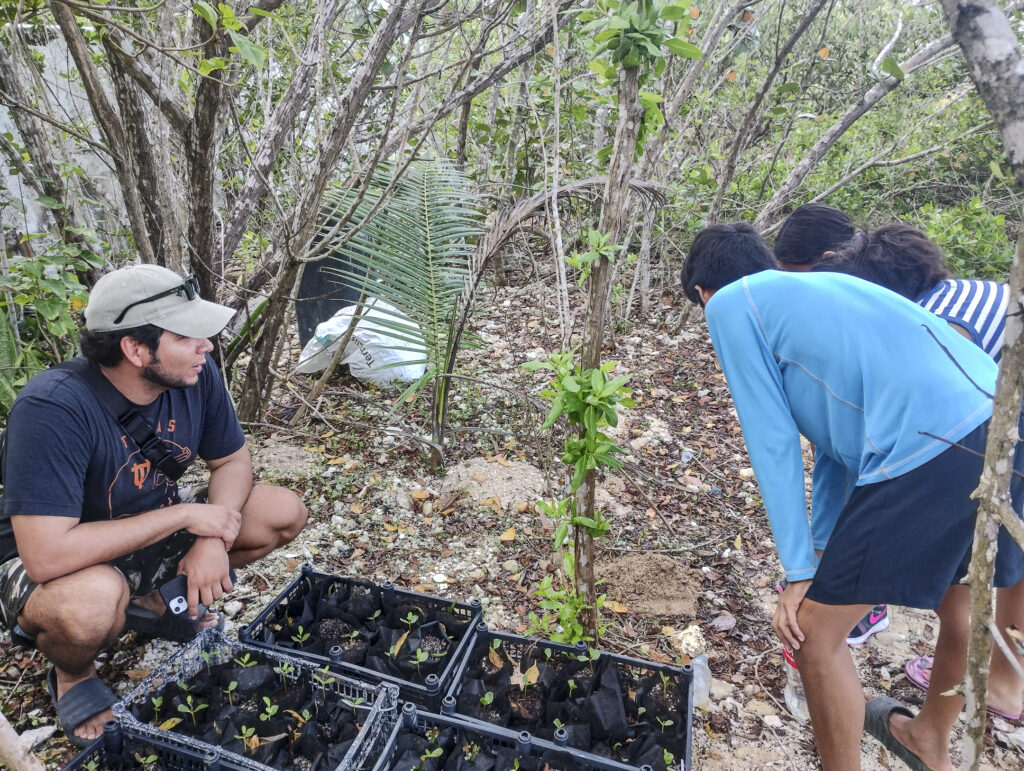
Program Goals:
- Spreading mangrove seeds during the collecting process.
- Educating the local community about the importance of mangrove ecosystems in Cozumel.
- Creating a stock of healthy mangrove trees ready to be transplanted when needed.
Threats to Mangroves
Climate change, coastal development, tourism, shrimp farming, and pollution from fertilizer runoff all contribute to the alarming destruction of mangrove forests worldwide. Less than 45% of mangrove ecosystems are protected, despite their vital role in environmental health. Much more must be done to ensure their protection. Governments must understand their vital role in marine ecosystems.
Mangroves and Sustainability in Cozumel
Protecting mangroves aligns closely with global sustainability goals. Here are a few ways this can be achieved:
- Conservation and Restoration Projects Reforestation programs can help restore degraded mangrove forests. Organizations worldwide are engaging in mangrove planting initiatives, often involving local communities.
- Sustainable Tourism Ecotourism focused on mangrove ecosystems can raise awareness and generate funding for conservation efforts. Visitors can experience kayaking, bird watching, or guided tours that emphasize the ecological significance of these forests.
- Local Community Involvement Empowering coastal communities to protect mangroves by offering alternative livelihoods, such as sustainable fishing practices or eco-friendly aquaculture, ensures long-term preservation.
- Policy and Advocacy Governments and NGOs must enforce stricter regulations to curb mangrove destruction. Raising public awareness through campaigns can also drive support for policy changes.
How You Can Help
- Support organizations that focus on mangrove conservation in Cozumel.
- Reduce your carbon footprint to mitigate climate change impacts.
- Educate yourself and others about the importance of mangroves and ecosystems in Cozumel.
- Participate in local mangrove planting initiatives if available.
Conclusion
Mangroves are more than just trees; they are lifelines for coastal ecosystems in Cozumel and protectors of biodiversity. Their role in mitigating climate change, safeguarding marine life, and protecting communities underscores the urgent need to conserve and restore these vital forests. By acting today, we can ensure that mangroves continue to thrive for generations to come—safeguarding not just Cozumel’s ecosystems but the whole planet.
Sand Dollar Sports is committed to protecting our natural resources. We are a truly sustainable water sports center. We are Travelife certified, a Green Fins Digital Member, and actively partner with many coral reef restoration programs. If you’re ever on the island we invite you to join our Reef Restoration Tour and learn first hand all we are doing!

